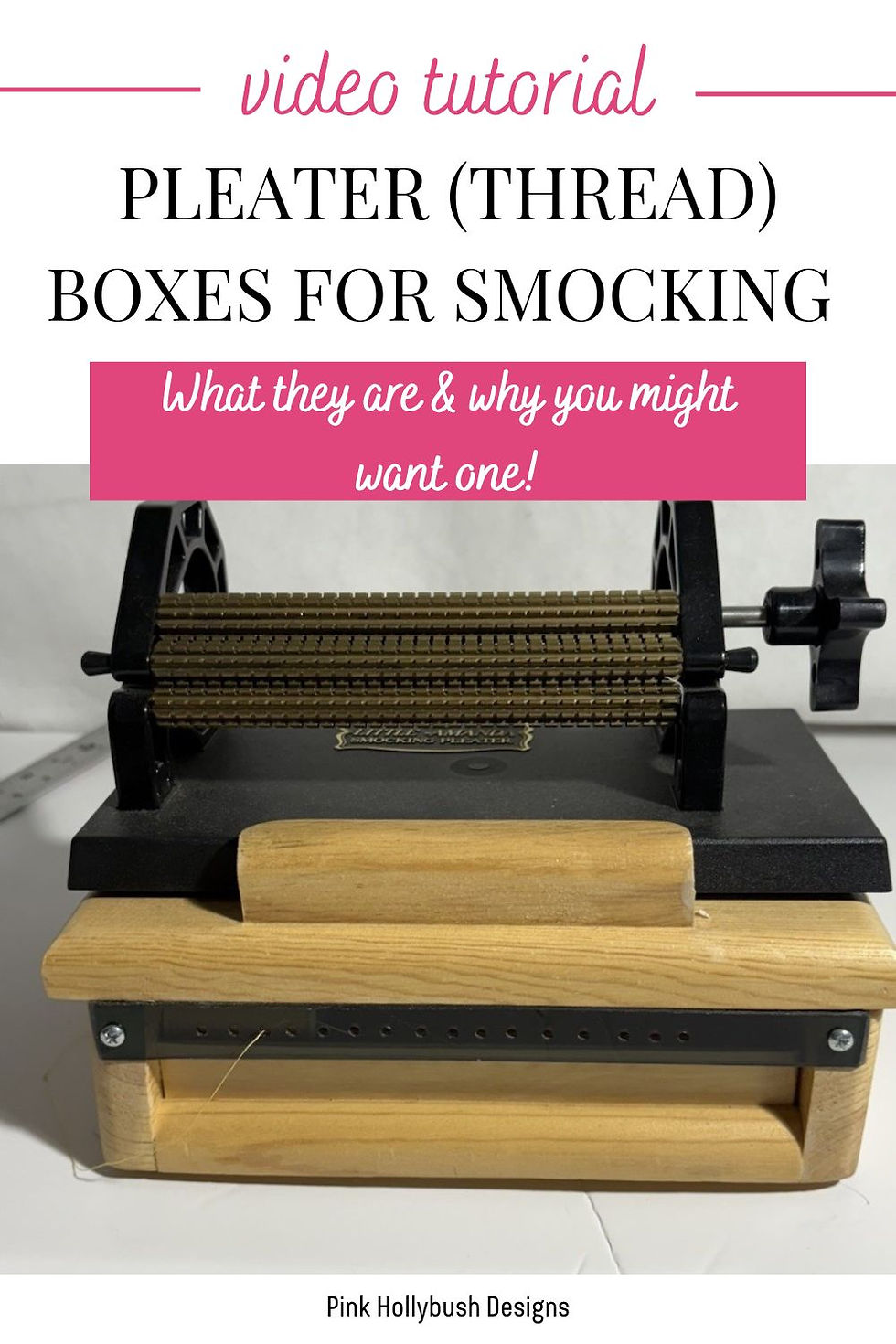Making a Sleeveless Honey
- Lisa Hawkes
- Jul 11, 2020
- 3 min read

My good friend Kelli is back today to share with you a quick method to make a sleeveless Honey. Here's Kelli!
Pink Hollybush Design patterns are appealing because they blend the heirloom needle art technique of smocking with the current trends of today - the function and convenience of knits! Synthesizing techniques traditionally associated as heirloom with knits is fun for new and experienced sewers alike. I really enjoy the smocking possibilities of the Honey pattern which features a high yoke design. This pattern includes both a short and long sleeve option.
In contrast, the May Garden pattern is a sleeveless dropped waist pattern with a few rows of smocking dotting the waistline. Adorable!
With summer on the horizon, I decided to make a sleeveless Honey, which gives me lots of real estate for picture smocking (my favorite!), and the comfort of sleeveless. The armhole sizes are slightly different between the two patterns, so unfortunately making the Honey sleeveless is not as simple as just using armhole facings from the May Garden pattern. This post will walk you step by step through the process of how I adapted the Honey pattern to a sleeveless design.
I followed the Honey pattern instructions through stitching on the pockets to the fronts and backs of the skirts. Next the sleeves should be attached so the side seams can be sewn from the sleeve edge, around the pockets and down the skirt sides; however, this is the point I depart from the pattern instructions. First, I sewed the side seams, pivoting around the pockets.

Next, I needed to determine the length to cut the armhole facing.
Determining the Length of the Armhole Facing
While there are likely lots of ways to measure a curve, I used a string laid along the curve from the very edge of the seamed side up to the shoulder seam.

The string extends from the very side seam edge of the fabric.

The string measurement stops at the shoulder seam and does not extend through the seam allowance at the shoulder. I drew a blue dot on the string to indicate where the measurement should stop.

The length is multiplied by 2 and then multiplied by 85% - 90%. Because it is a knit, the facing should cinch or pull in the fabric, which is why you only want to take a slightly smaller percentage of the overall length. The length of my size 5 armhole measured roughly 5 ¾ inches, so the totally length should be 10 ¼ inch. 5 ¾ x 2 = 11 ½ x .90 = 10 2/5 total.

To make life easier, I rounded to a friendlier fraction of 10 ¼ inch. Using the width given for the Honey neckline facing, I cut two facings 1 ½ inch by 10 ¼ inch.

At this point, I am just about ready to pick up with the pattern instructions again for applying the facings, but when I stitch the short ends of the facing together, I used ¼ instead of 3/8 because I have to use the same seam allowance I built into my measurement. I serged my side seams and trimmed it to ¼ inch.

Now I can sew my facing on using the Honey pattern instructions for the neckline. Here is the facing sewn on.

Distributing the Stretch
Knit facings are usually slightly smaller than the overall length to add strength and pull up the fabric. This is done to reinforce the overall shape. I attached the facings of this garment concentrating the stretch on the left side more towards the underarm area

and more towards the shoulder on the right side.

I did this just to demonstrate the difference. I like it better more towards the underarm which has a slightly sharper curve and needs the shape to be reinforced.
I am very happy with the overall finish and style of the dress. The smocking plate is Little Memories “The Honeyspooners.”







